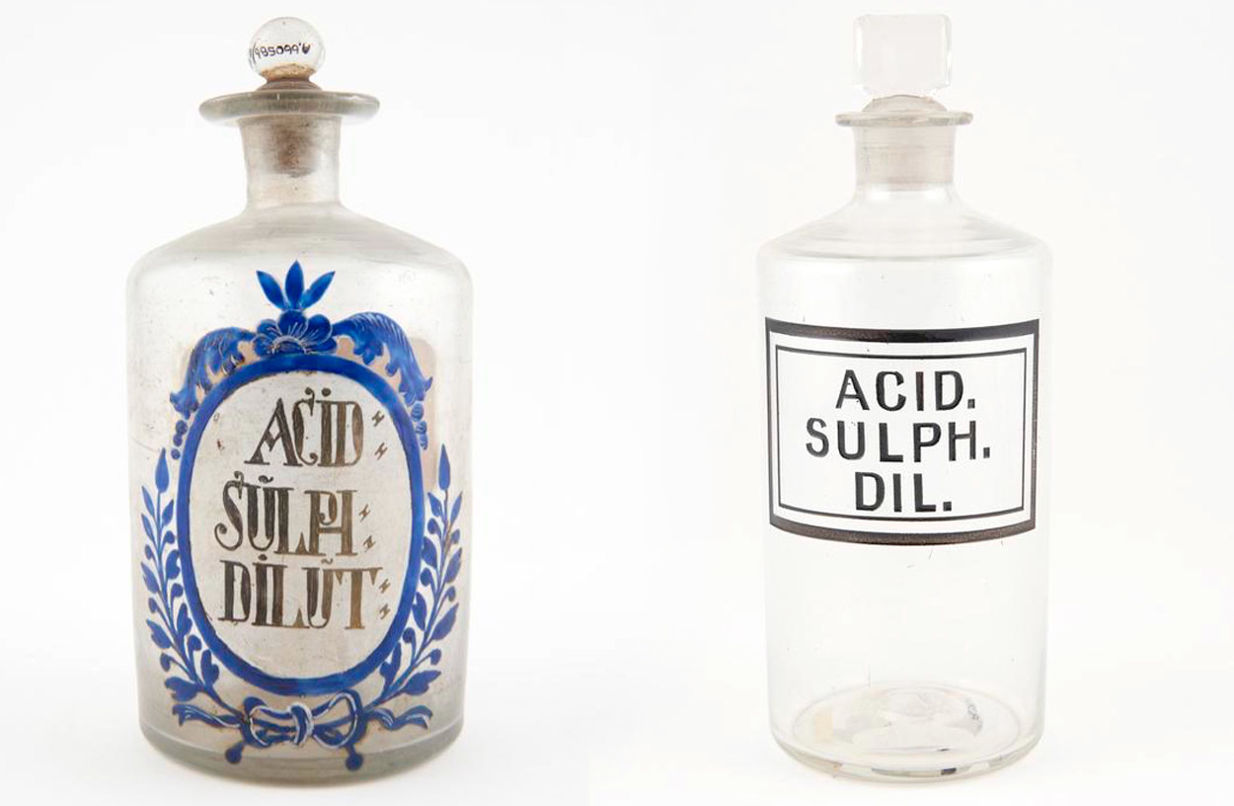
Acid Attacks
 Science Museum Group © The Board of Trustees of the Science Museum
Science Museum Group © The Board of Trustees of the Science Museum
Acid, such as sulphuric acid (vitriol), delivers devastating burn injuries to the face (countenance) and elsewhere. Whilst being injured in this way is comparatively uncommon, chemical burns—a term which covers acid, alkali and caustic injuries—are profoundly complex, with different substances altering the manner in which skin is affected.
Acid burns are today frequently associated with violent attacks on women, but historical research demonstrates that matters are more complicated.
Since 1800 acid burns have been a hazard in industry as well as in the home and to children, especially before the 1970s introduction of safer packaging for cleaning materials. Even in acid-related crimes, there is no one, simple story. First coming to prominence in disputes between labourers and employers in 1820s Scotland, the 1840s saw tensions between working people and those in authority (who were often English and/or Protestant) in Ireland result in a spate of acid attacks on politicians and police.
Historian Katherine Watson found that of all the ‘vitriol throwing’ stories in the nineteenth-century Times newspaper, the perpetrator was about as likely to be a man as they were a woman. Yet acid attacks were still characterised as a woman’s crime into the twentieth century. Today the narrative has switched to male perpetrators: 2002–2018 London statistics suggest that men were eleven times more likely to be suspects than women.
The introduction of steam-powered looms, and the subsequent employment of unskilled workers and drop in wages resulted in a series of acid attacks in 1820s Glasgow. In 1821, Patrick Mellon was charged with one incident (later found Not Proven). Victim James Cairnie’s ear was burned off and his skin and sight damaged.
Newspaper image © The British Library Board. All rights reserved. With thanks to The British Newspaper Archive.
In 1885, Ellen Bevan was charged with throwing vitriol at Jane Strother in a Birmingham street in front of Strother’s daughter, Amelia (13). Jane and Amelia sustained facial burns; the former lost sight in both eyes. The prosecution remarked that it was ‘a pity that the law did not restrict the sale’ of vitriol.
Newspaper image © The British Library Board. All rights reserved. With thanks to The British Newspaper Archive.
After a spate of attacks, in 2018 the UK government ‘banned people possessing sulphuric acid without a valid reason’. Whilst police vehicles may now be equipped with ‘treatment kits’, anyone can learn the first aid response to help people who have been injured in an attack.
Thanks to the British Association for Plastic, Reconstructive and Aesthetic Surgeons and NHS England.